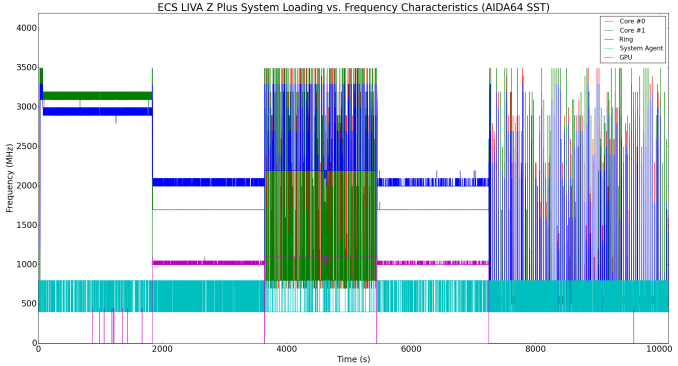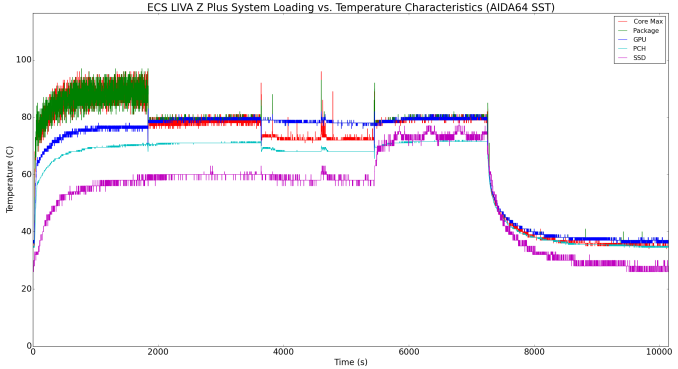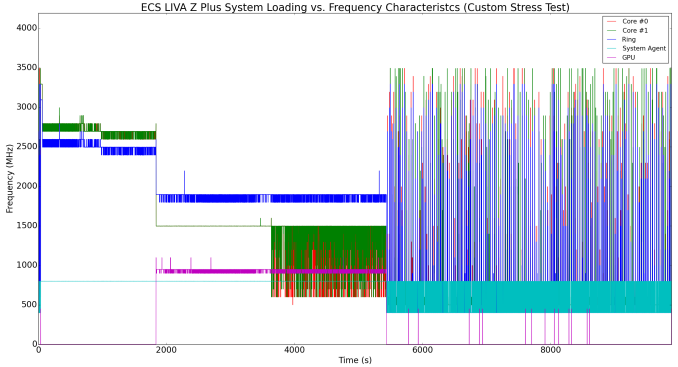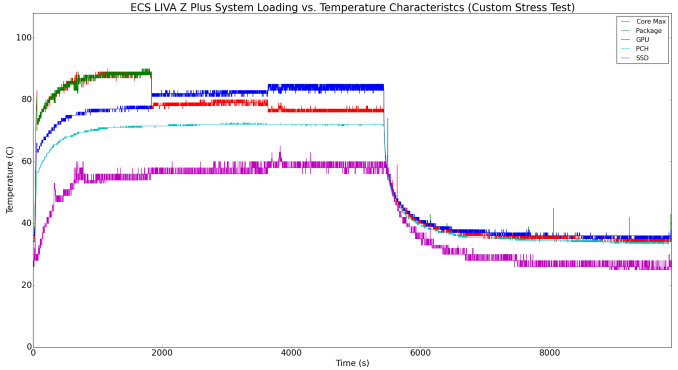ECS LIVA Z Plus Kaby Lake vPro UCFF PC Review
by Ganesh T S on April 12, 2017 8:00 AM ESTPower Consumption and Thermal Performance
The power consumption at the wall was measured with a 1080p display being driven through the HDMI port. In the graphs below, we compare the idle and load power of the ECS LIVA Z Plus with other low power PCs evaluated before. For load power consumption, we ran the AIDA64 System Stability Test with various stress components, as well as our custom stress workload (combination of Prime95 and Furmark), and noted the maximum sustained power consumption at the wall.


The system configuration and choice of SSD ensures that the idle and load power consumption numbers for the ECS LIVA Z Plus are excellent compared to the other systems with similar performance numbers.
Our thermal stress routine starts with the system at idle, followed by four stages of different system loading profiles using the AIDA64 System Stability Test (each of 30 minutes duration). In the first stage, we stress the CPU, caches and RAM. In the second stage, we add the GPU to the above list. In the third stage, we stress the GPU standalone. In the final stage, we stress all the system components (including the disks). Beyond this, we leave the unit idle in order to determine how quickly the various temperatures in the system can come back to normal idling range. The various clocks, temperatures and power consumption numbers for the system during the above routine are presented in the graphs below.
According to the official specifications, the junction temperature of the Core i5-7300U is 100C. The thermal solution is able to keep the package temperature below that. We find that the system is essentially limited by the 15W package power.
We repeated the same observations with our legacy stress test using the latest versions of Prime95 and Furmark - Prime95 v28.10 for 30 minutes (after launching with the max. stress option), followed by Furmark v1.18.20 for 30 minutes. The Prime95 load is then removed, allowing just the GPU alone to be stressed for 30 minutes. The system is then left idle.
The limiting factor here is again the 15W package power. However, we can see that the Prime95 AVX workload causes the cores to run at less than the base frequency of 2.6 GHz in order to be within the power limits. The temperature rise is also not as much as what we saw in the first workload component of the AIDA64 system stability test.
















12 Comments
View All Comments
neo_1221 - Monday, May 15, 2017 - link
"Transcend TS128GMTS400 (512 GB)"I think you mean 128GB. Now I don't know if it's actually 20nm MLC or if that's a copy-paste error too...